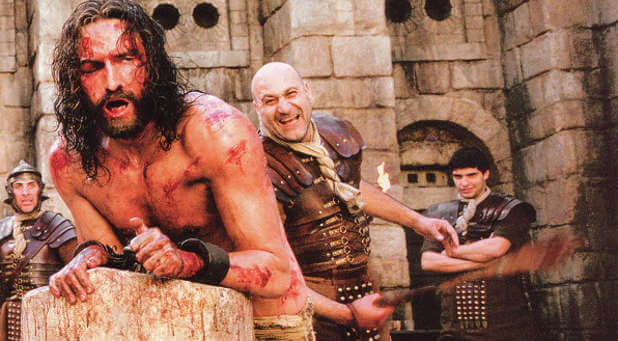The Christian faith is built on the undeniable, unshakeable truth that Jesus was raised from the dead. It is also founded on the historical fact that the Savior suffered unimaginable pain when Roman soldiers nailed Him to a cross.
I hope you will ponder that pain as you celebrate the death and resurrection of Christ this weekend.
When the movie The Passion of the Christ was released 12 years ago, Hollywood insiders mocked it because it offered a realistic—and extremely bloody—depiction of Jesus’ torture and death. Regardless of what you think of controversial director Mel Gibson, he did a masterful job of capturing the brutality of a first-century Roman execution.
I know some Christians who objected to the R-rated violence of Gibson’s movie, as if what happened to Jesus should be reduced to the sanitized charm of a Renaissance-era painting. But the truth is that what Jesus suffered on Good Friday was R-rated. It was spattered with blood and horrifying to watch.
Nobody performed an autopsy on Jesus’ mangled body after He was taken down from the cross. But doctors who have studied the Bible’s description of His death say the pain would have been beyond excruciating. In fact, the word excruciating means “out of the cross.” Jesus literally defined the worst pain anyone could feel.
His suffering began in Gethsemane, when God laid the sins of the world on His beloved Son. Hebrews 5:7 says Jesus offered up prayers “with loud crying and tears” during this moment of anguish. Luke’s Gospel says the agony was so strong that Jesus’ sweat “became like drops of blood, falling down upon the ground” (Luke 22:44). The intense stress caused what physicians call hematidrosis, a condition in which blood seeps out of sweat glands.
After His arrest, Jesus was flogged so mercilessly that his skin was stripped off His back, exposing muscle and bone. The soldiers who tortured Jesus would have used a weapon called a flagellum—a whip that had several leather strands with lead balls or shards of bone attached to the ends.
The cuts inflicted by this whip could actually rip open the flesh and expose internal organs. Jesus would have lost a significant amount of blood after His scourging—and this would explain why He did not have the strength to carry His cross all the way to Calvary.
Matthew 27:28-29 says the Roman soldiers stripped Jesus naked and then twisted together a handmade crown made of thorns to mock His kingship. Bible scholars believe these thorns were extremely long and hard. When the thorns pierced the top and side of His head, Jesus would have most likely experienced what doctors call “trigeminal neuralgia”—piercing pain all over the head and face.
After this merciless abuse, Jesus was covered with a red robe and led to Golgotha. There, Roman soldiers drove seven-inch metal spikes into his wrists (most likely hitting the median nerve, causing more blinding pain) and then they rammed another spike into his feet.
At that point, doctors say, Jesus would have suffered dislocation of His shoulders, cramps and spasms, dehydration from severe blood loss, fluid in His lungs and eventual lung collapse and heart failure.
Yet Jesus refused to drink wine mixed with gall, a pain-killing solution offered to Him by his executioners (Matt. 27:34). He chose to endure the full impact of the pain.
He felt that pain for us.
Some victims of Roman crucifixion took as long as nine days to die, but Jesus’ death came in a matter of hours—probably because He had been flogged so cruelly before He was nailed to the rough wood. Victims of crucifixion typically developed serious dehydration because of a lack of blood and oxygen.
As Jesus took His last breath, He said: “It is finished.” He was actually quoting the last verse of Psalm 22, a psalm He recited throughout His torture. It is one of the most graphic prophecies about Christ’s suffering in the Old Testament—and Jesus knew it was about Him.
Jesus willingly poured out His blood on that cruel cross. It was an ugly, revolting, disgusting scene. We don’t have to downplay the violence or muffle the gut-wrenching cries. The Bible does not soften the impact or censor the cruelty of Jesus’s suffering. Isaiah 53:6 says: “But the Lord has caused the iniquity of us all to fall on Him.”
God laid the sins of the world on Jesus, and then He sacrificed Him as the one and only Lamb of God. Isaiah 53 goes on to say: “But He was pierced through for our transgressions, He was crushed for our iniquities.” He took all that pain to fully pay the price so that we could be forgiven.
This Easter, please don’t settle for a G-rated, greeting-card version of the cross. Consider the depths of the agony Jesus experienced when He died for you. He took the pain we deserved.











































